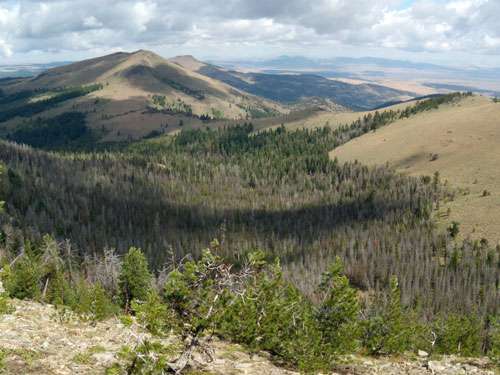Increasingly severe disturbances weaken world's temperate forests

Longer, more severe, and hotter droughts and a myriad of other threats, including diseases and more extensive and severe wildfires, are threatening to transform some of the world's temperate forests, a new study published in Science has found. Without informed management, some forests could convert to shrublands or grasslands within the coming decades.
"While we have been trying to manage for resilience of 20th century conditions, we realize now that we must prepare for transformations and attempt to ease these conversions," said Constance Millar, lead author and forest ecologist with the USDA Forest Service's Pacific Southwest Research Station.
Many forests are remarkably resilient, re-growing after years of logging. Yet, the researchers note from review of the enormous body of work on the subject, climate change and rising global temperatures are giving rise to "hotter" droughts—droughts that exhibit a level of severity beyond that witnessed in the past century. During a hotter drought, high air temperatures overheat leaves and also increase the stress on trees by drawing the moisture from their tissues at faster rates than normal. Snow that would normally act as emergency water storage for trees during the dry season instead falls as rain.
Combined, these factors may cause abnormally high levels of forest mortality during hotter droughts.
"Some temperate forests already appear to be showing chronic effects of warming temperatures, such as slow increases in tree deaths," said Nathan Stephenson, coauthor and ecologist with the U.S. Geological Survey. "But the emergence of megadisturbances, forest diebacks beyond the range of what we've normally seen over the last century, could be a game-changer for how we plan for the future."
Chronic stress from drought and warming temperatures also expose temperate forests to insect and disease outbreaks. And as temperatures rise in many regions, fires grow in frequency and severity causing losses in private property, natural resources and lives.
Losing temperate forests to worsening droughts, megafires and insect and disease outbreaks could lead to widespread losses of forest ecosystem services like national park recreational areas, the researchers caution. Forests also play an important role in storing atmospheric carbon dioxide and watershed protection, for example. The scientists encourage future studies identifying forests most vulnerable to the effects of mega-disturbances. In some cases, forest managers may be able to preserve ecosystem services like carbon storage as temperate forests transition to new ecological states.
More information: The paper, "Temperate Forest Health in an Era of Emerging Megadisturbance," was released in the journal Science.
Journal information: Science
Provided by USDA Forest Service




















